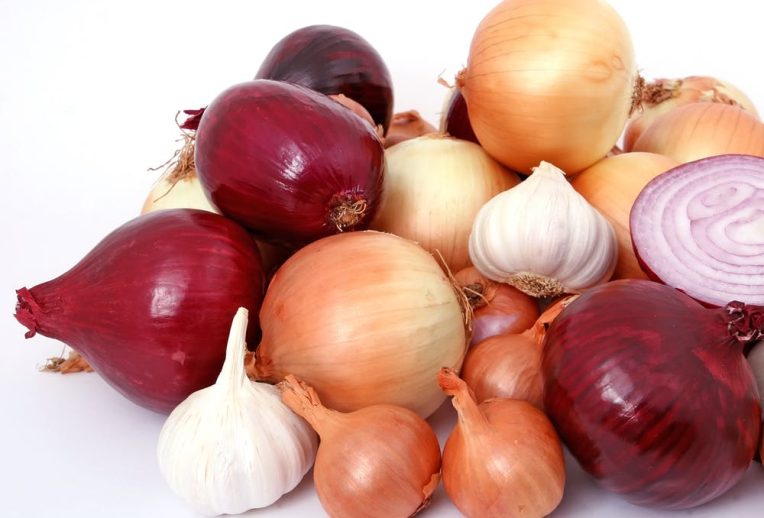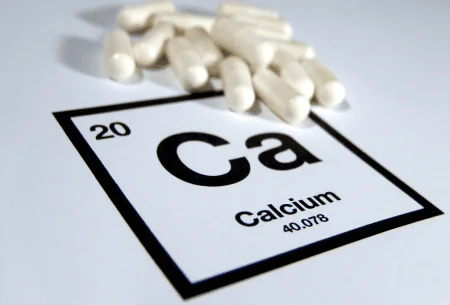I’m sure you’ve heard the term FODMAP floating around – and have seen a lot of discussion about the low-FODMAP diet. They are notoriously blamed for common digestive issues like bloating, gas, stomach pain, diarrhea and constipation in sensitive people.
But what actually are FODMAPs and should we be avoiding them?
What Exactly Are FODMAPs?
The term FODMAP stands for Fermentable Oligo-, Di-, Mono-saccharides and Polyols.
Without getting too technical, these are the scientific names given to different groups of carbohydrate-based on their chemical structure. There are four groups of FODMAPs, which umbrellas seven key carbohydrates.
FODMAPs are found in a wide range of everyday foods and are poorly digested by humans. They are naturally present in some foods. They are also added to other foods to increase food quality such as appearance, texture and flavour.
FODMAPs share two things in common, they are typically:
-
Short-chains of sugars linked together.
-
Not completely absorbed by your body.
These two key characteristics are the reason why some people are sensitive to FODMAPs.
How Do FODMAPs Cause Gut Symptoms?
FODMAPs can cause gut symptoms in two ways.
-
Attracting Fluid
Because FODMAPs are short-chains of sugars they are “osmotically active”. This means they attract water from the body tissues into the intestine.
This can lead to symptoms such as bloating and diarrhea in sensitive people
For example when you eat the FODMAP fructose it draws twice as much water into the intestine compared to when you eat glucose (a non-FODMAP).
-
Bacterial Fermentation
When you eat carbohydrates they need to be broken down into single sugars by enzymes before they can be absorbed across your intestinal wall and used by your body.
However, humans cannot produce some of the enzymes needed to break down FODMAPs. This leads to undigested FODMAPs travelling through the small intestine and into the large intestine (also known as the colon).
Intriguingly your large intestine is home to trillions of bacteria. These trillions of bacteria rapidly ferment FODMAPs releasing gas and other chemicals which can cause digestive symptoms such as bloating, stomach pain and altered bowel habit in sensitive people.
For instance it has been shown that when you eat the FODMAP inulin it produces 70% more gas in the large intestine compared to glucose (4).
These two processes occur in most people when they eat FODMAPs. However, not everyone is sensitive to FODMAPs.
The reason why some people get symptoms and others do not is thought to be related the sensitivity of the intestine (known as colonic hypersensitivity). This is known to be particularly common in people with IBS.
So Who Should Try A Low FODMAP Diet?
A low FODMAP diet is achieved by simply avoiding foods high in FODMAPs. This concept was first brought about in 2005 by a group of researchers for the management of IBS. And IBS is more common than you may realise – in fact, 1 in 10 adults have IBS.
Furthermore, there has been over 30 clinical trials testing the low FODMAP diet in people with IBS. Pooled results from 22 of these studies (using a technique know as a systematic review and meta-analysis) suggests that following a low FODMAP diet can improve:
-
Overall digestive symptoms*
-
Abdominal pain*
-
Bloating*
-
Quality of life*
-
Gas
-
Altered bowel habit (both diarrhea and constipation)
*Strongest evidence
It is worth noting that in nearly all of these studies, the diet was delivered by a dietitian.
What’s more, the vast majority of the research has been in adults. Because of this there is limited evidence for use in children.
There is also some speculation that a low FODMAP diet may benefit other conditions such as diverticulitis and exercise-induced digestive issues. However, the evidence for its use beyond IBS is limited.
Bottom Line: A low FODMAP diet improves overall digestive symptoms in approximately ~70% of adults with IBS. However, there is insufficient evidence at this stage to recommend the diet for management of other conditions.
5 Things to Keep in Mind About a Low FODMAP Diet
-
It is a low FODMAP diet, not a no FODMAP diet.
Unlike food allergies, you do not need to completely eliminate FODMAPs from your diet. In fact, FODMAPs are beneficial for gut health. Therefore including FODMAPs in your diet up to your own personal tolerance is recommended.
-
A low FODMAP diet is not gluten-free.
A low FODMAP diet is typically lower in gluten by default. This is because wheat (which is a main source of gluten) is excluded on a low FODMAP diet because it is high in fructans. However, a low FODMAP diet is not a gluten-free diet. For instance, foods such as sourdough spelt bread whichh contains gluten are allowed on a low FODMAP diet, but some other gluten-free foods like amaranth are not. -
A low FODMAP diet is not dairy-free.
The FODMAP Lactose is typically found in dairy products. Nonetheless, many dairy products contain low levels of lactose making them low FODMAP. Some examples of low FODMAP dairy foods include hard and aged cheeses, crème fraiche and sour cream. -
The low FODMAP diet is not a long term diet.
It is not desirable or recommended to follow a low FODMAP diet for longer than eight weeks. In fact, the low FODMAP diet process involves three steps which involves reintroducing FODMAPs to your personal tolerance. -
FODMAP composition data is not readily available.
FODMAP food composition data is not readily available in the public domain, unlike other nutrient data for vitamins and minerals. There are many low FODMAP food lists available online, however, these are secondary sources of data and are not complete.Comprehensive food lists that have been validated in clinical trials are available from both King’s College London and Monash University.
Bottom Line: The low FODMAP diet may contain some FODMAPs as well as gluten and dairy. The diet should not be strictly followed long-term (beyound eight weeks) and you should consider the accuracy of your FODMAP information.
Is a Low FODMAP Diet Nutritionally Balanced?
You can still meet your nutritional requirements on a low FODMAP diet. However, like any restrictive diet you have an increased risk of nutritional deficiencies – fibre and calcium are the two nutrients most at risk.
FIBRE
Many foods that are high in fiber are also high in FODMAPs. Therefore people often reduce their fiber intake in a low FODMAP diet. This can be avoided by replacing high FODMAP, high fibre foods such as fruit and vegetables with low FODMAP varieties that still provide plenty of dietary fibre.
Low FODMAP sources of fibre include: oranges, raspberries, strawberries, green beans, spinach, carrots, oats, brown rice, quinoa, gluten-free brown bread and linseeds.
CALCIUM
Dairy foods are a good source of calcium. However, many dairy foods are restricted on a low FODMAP diet including milk and yogurt, and this is why calcium intakes may decrease when following a low FODMAP diet.
Low FODMAP sources of calcium include: hard and aged cheese, lactose-free milk and yogurt, calcium fortified nut, oat and rice milks, and tinned fish with edible bones.
Does Everyone on a Low FODMAP Diet Need to Avoid Lactose?
Lactose is the Di-saccharide in FODMAPs. It is commonly referred to as “milk-sugar” because it is found in dairy foods such as milk, soft cheese and yogurt.
Lactose intolerance occurs when your body makes insufficient lactASE (an enzyme) to digest the lactOSE (a sugar). This leads to maldigestion of lactose which is both osmotically active (drawing water in) and fermented by your gut bacteria.
What’s more, the prevalence of lactose intolerance in people with IBS is variable with reports ranging from 20-80%. For this reason, lactose restriction is included on a low FODMAP diet.
HOWEVER, if you already know you do not have lactose intolerance (ruled out by breath test or systematic restriction), you do not need to restrict lactose on a low FODMAP diet.
When You Should Seek Medical Advice
Digestive symptoms are present in many conditions. Some conditions are benign such as functional bloating and others more sinister such as coeliac disease, inflammatory bowel disease (IBD) and colon cancer.
For this reason it is important to rule organic disease BEFORE starting a low FODMAP diet.
Alarm features include:
-
Unexplained weight loss
-
Anaemia (iron deficiency)
-
Rectal bleeding
-
Family history of coeliac disease, bowel cancer or ovarian cancer
-
Aged over 60-years with changes in bowel habit lasting more than six weeks
Bottom Line: Digestive issues can mask underlying disease. It is important to rule out organic disease by seeing your doctor before starting a low FODMAP diet.
TAKE-HOME MESSSAGE
FODMAPs are considered healthy for most people. However a surprising number of people are indeed sensitive to FODMAPs, particularly people with IBS.
The diet may also benefit people with other conditions, although so far the research is limited.
The low FODMAP diet has been tried and tested and is considered safe in adults. However, care should be taken to:
-
Choose foods high in fiber and calcium.
-
Source reputable FODMAP resources.
-
Rule-out underlying disease.
Scientists are currently working on ways to predict who will respond to the low FODMAP diet. For now, however, the best way to find out if the diet will work for you is by testing it out for yourself – with the support of a dietitian.














